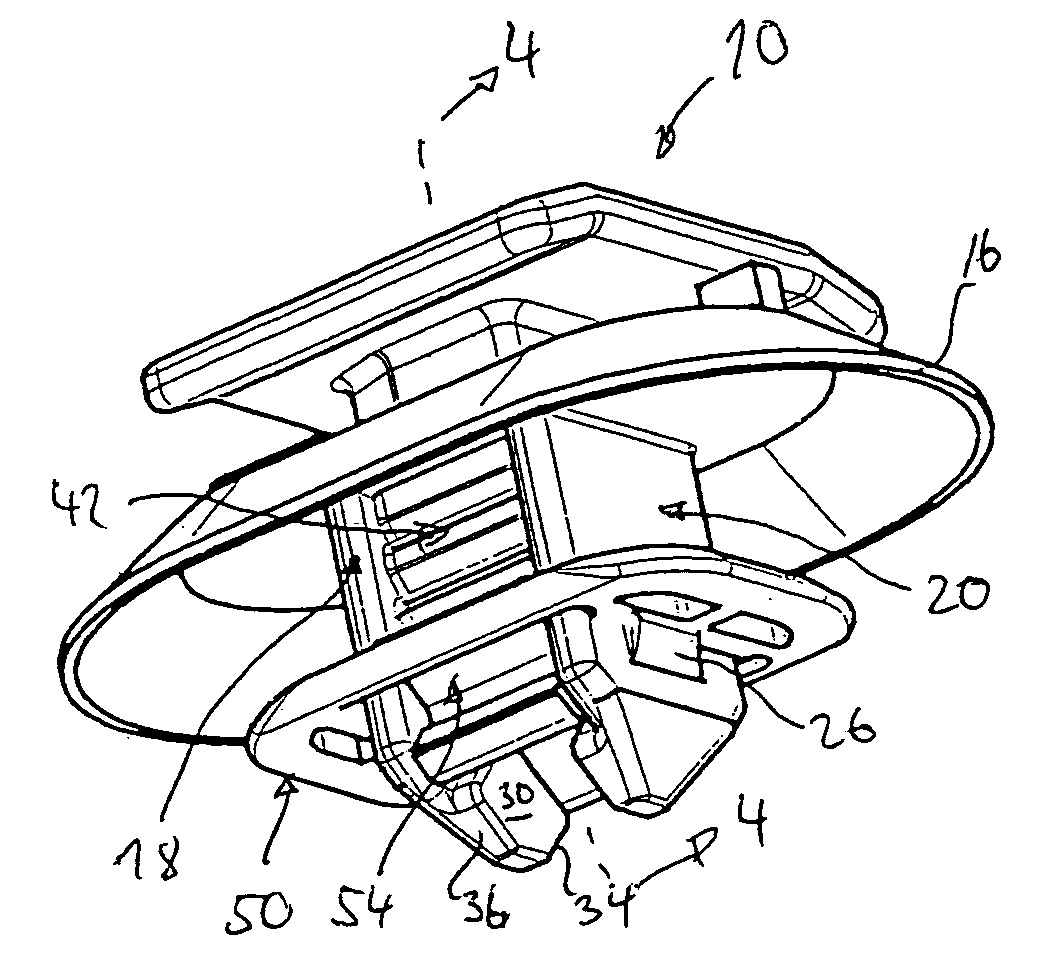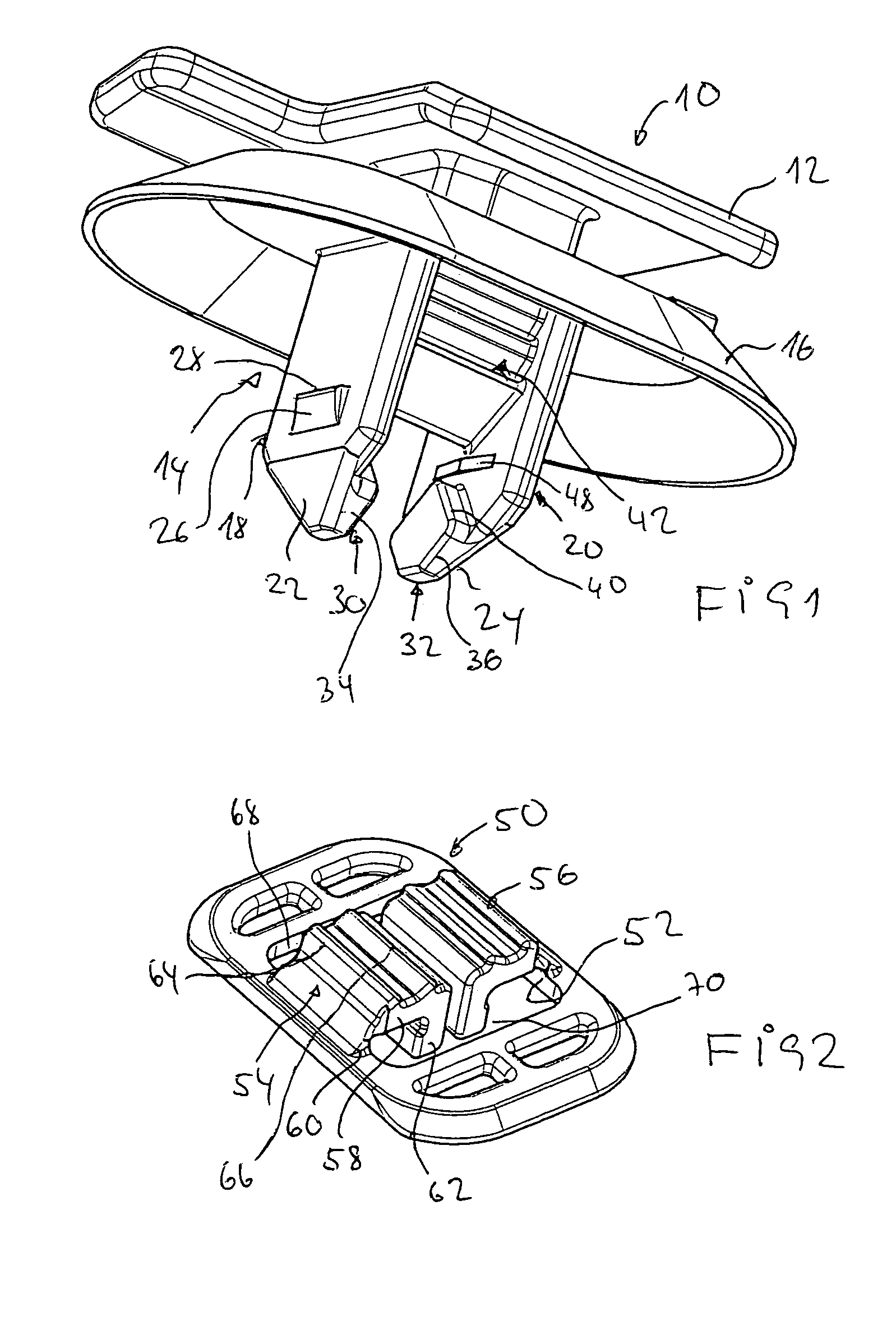Fastener element for connecting a structural part to a support part
- Summary
- Abstract
- Description
- Claims
- Application Information
AI Technical Summary
Benefits of technology
Problems solved by technology
Method used
Image
Examples
Embodiment Construction
[0027]The fastener body 10 shown in FIG. 1 has an elongate head 12 and a shank generally designated 14 which is connected to the head 12 and has two parallel spaced outer webs 18, 20 below an oval, conical sealing flange 16. The outer webs 18, 20 are elongated rectangular in cross-section with the longer sides of the outer webs 18, 20 extending parallel to each other. The outer webs 18, 20 have tapering introduction portions 22, 24 at the free end. On the outer surfaces facing away from each other, the outer webs 18, 20 have elevations one of which is shown at 26. The elevations define a shoulder 26 facing the head 12, reference to which will be made farther below. The outer webs have projections 30, 32 on the inner surfaces facing each other. As can be appreciated from FIG. 4, for example, in which the fastener body 10 is shown in section the projections 30, 32 have lower ramp surfaces 34, 36 which converge downwardly towards the free end of the outer webs 18, 20 and upper ramp sur...
PUM
 Login to View More
Login to View More Abstract
Description
Claims
Application Information
 Login to View More
Login to View More - R&D
- Intellectual Property
- Life Sciences
- Materials
- Tech Scout
- Unparalleled Data Quality
- Higher Quality Content
- 60% Fewer Hallucinations
Browse by: Latest US Patents, China's latest patents, Technical Efficacy Thesaurus, Application Domain, Technology Topic, Popular Technical Reports.
© 2025 PatSnap. All rights reserved.Legal|Privacy policy|Modern Slavery Act Transparency Statement|Sitemap|About US| Contact US: help@patsnap.com



